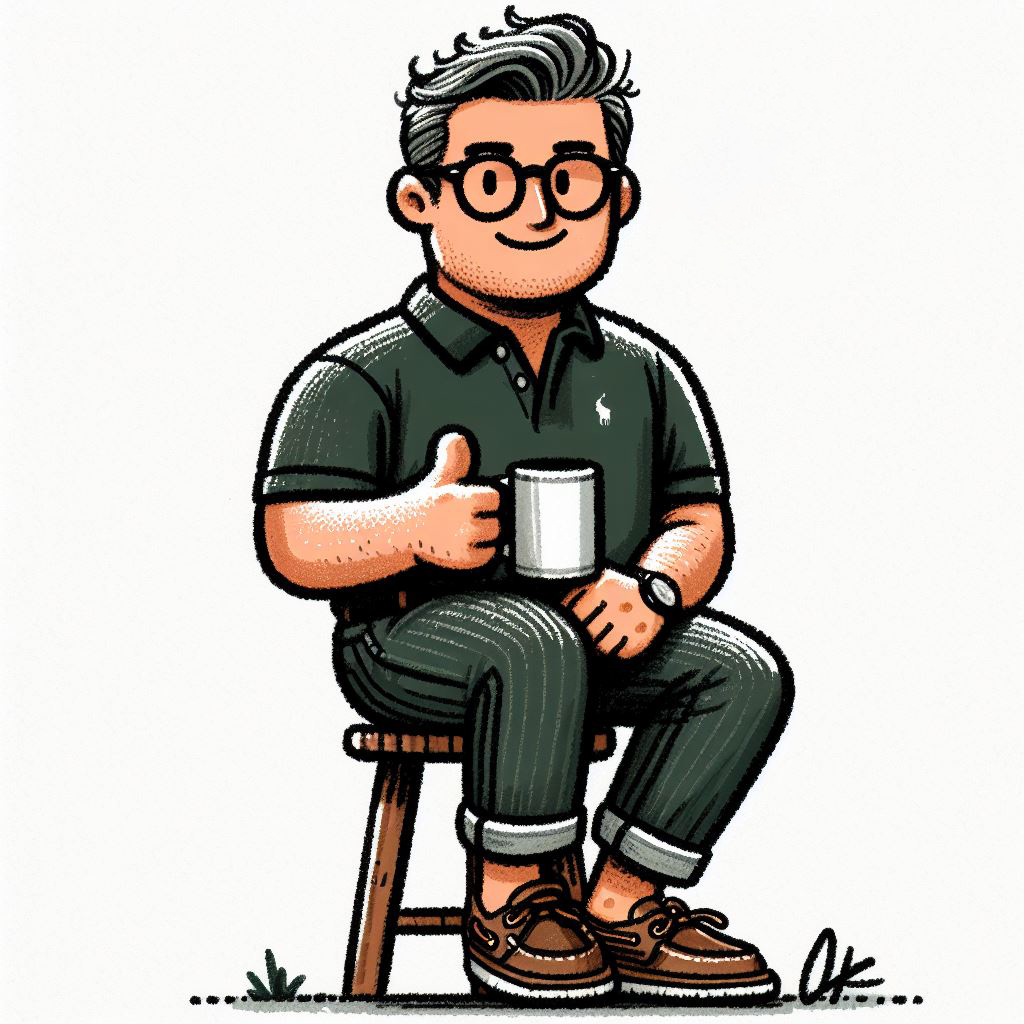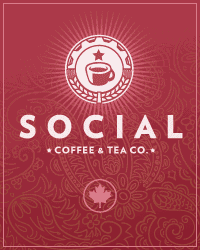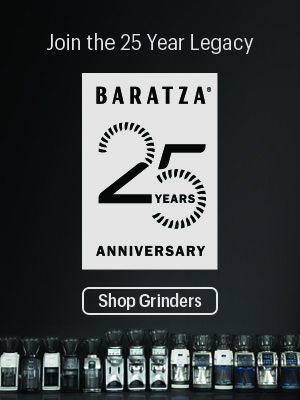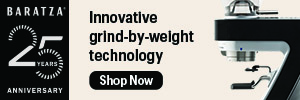In my last article I talked about how I’ve seen espresso changing in the last few decades and how at any given moment of time we (as an industry and as coffee lovers) feel we are quite skilled in the art of espresso. But fast forward a few years and we realise we barely knew squat. This is because we still, to this day, know next to nothing about the most complex brewing method we’ve ever thrown at the roasted coffee bean.
And that is exactly what makes espresso so exciting and intriguing for me. We have so much to learn and understand, and it will never end!
So where are we with espresso in 2010? Let me present you with the following.
The State of Espresso in 2010
There’s actually “states” of espresso, not just state. One has to do with pressure profiling as the new shiny thing. Another has been going on for a few years now – the trend towards single origin espresso (which I discussed at length in the previous article). Yet another has to do with the phantom on the horizon (and one I happen to believe will improve espresso dramatically – much more so than pressure profiling): temperature profiling. And lastly, a state of espresso that I am always concerned with and I wish more industry professionals (especially baristas) would pay heed to: the state of espresso in the home. Let me share some thoughts on all four states, and also touch on some other trends in espresso, especially in the home.
Pressure Profiling espresso shots
Andy Schecter, the guy who brought us all the PID in temperature control on espresso, was at it again in 2007 at Long Beach when he showed off a very experimental pressure control system for espresso brewing that let the barista change the pressure of the water.
Fast forward a few years, and you have two companies – La Marzocco and Slayer – pushing out the first commercial pressure profiling systems on espresso machines. Even my Speedster and paddle group GS/3 allow for some rudimentary pressure profiling (going from neutral water pressure to 3 bar to pump pressure and back to 3bar). The GS/3 paddle group even allows you to restrict the line pressure flow somewhat, giving you lower than 3bar preinfusion if you like. I also wrote on my Tumblr account a more detailed walk through on how the Speedster handles pressure profling.
I’ve now spent a fair amount of time brewing with pressure tweaks, and tasting others’ efforts on pressure profiling systems, to develop an opinion on it all. The words of Shakespeare come to mind: Much Ado About Nothing.
It may be that pressure profiling will eventually lead to better espresso, but I just don’t think we know enough about the espresso brewing process for even a good barista to get much out of these systems. I certainly don’t see any consistent improvements to the taste of the coffee. I do see changes in how the coffee tastes, but for the most part, they aren’t what I’d consider good changes.
I’m not the only opinion on this, and others have different takes on it all. Tim Wendelboe recently wrote about the Strada machine on his blog, and at one point he writes:
“Working with pressure profiles, when it comes to taste, is very difficult. It changes the taste of the espresso so much that you can get anything from syrupy sweet espressos to more elegant and transparent shots. It is also very easy to make really bad tasting shots. I no longer know what I want my espressos to taste like. It is very frustrating! Therefore I think one needs to have a clear vision of what the espresso should taste like before one starts playing with profiles.”
This is a former world champion barista, and someone who is constantly pushing the envelope on espresso brewing techniques… if he’s finding it difficult… how do you think the average barista in the average cafe will do with this technology?
I think the industry is throwing way too much time and effort (not to mention cost and costly machines more prone to breaking down) towards this phantom power, phantom hope of improving espresso known as pressure profiling. I think instead, our industry should continue the path that first lead to dramatic breakthroughs in the early part of the 21st century: temperature.
Temperature profiling
Temperature profiling makes a hella lot more sense to me when it comes to improving espresso. It’s a known fact by our industry that coffee’s flavour, extraction, and potential is radically changed by different brewing temperatures. We know that too-hot water, especially at the end of the shot, extracts way too many bitters. Too cold water, especially at the start of a shot, extracts too many sours and excessive acidity.
There’s a really simple test you can do to see how temperature affects the stages of a shot. Line up five shot glasses on a flat piece of narrow wood or shallow stand. Stick the entire contraption under your portafilter spouts so the first shot glass is lined up to receive both streams from the spouts. Commence a shot pull. Every five seconds, slide the stand so the next shot glass lines up under the spouts. Continue doing this until you’ve broken down the shot into five shot glasses, each holding 5 seconds worth of espresso pull. Taste the results.
The first shot glass may seem overly sour and viscous. This is because the temperature on the machine wasn’t high enough to garner an ideal extraction (sidenote: this is related to a few things: the bed of coffee “eats” up most of the thermal water temperature early on; also the bed of coffee isn’t fully saturated yet; third, early on in extraction, more C02 and soury elements may be extracted).
The middle two or three shot glasses will probably taste the best, where balance in the temperature + extraction were ideal. The second to last shotglass might taste a bit thin and bitter, and the last one excessively so.






If you’re fortunate enough to have a PID controlled espresso machine, run the same test with temperatures as high as 206F, and as low as 180F, and taste all the shot segments… you might be surprised by the results.
Just running these tests opens up ideas about controlling water temperature (and changing it) throughout the entire shot. How much would our shots improve if we could blast the first five seconds with 206F water, but quickly ramp it down to 199F at 6 seconds in, and slowly decline it to 195F by 20 seconds in. Then rapidly decline the temperature more for the last five seconds, perhaps settling at 185F as the final temperature?
There are ways to do this. A two-flow system, one via line water (usually around 65F or lower), one via boiler water (say optimized to 212F via PID control) intermixing and changing volumes on the fly could deliver much more precise temperatures.
At the very least, I believe it would lead to much more dramatic improvements in espresso shot quality than any pressure profiling system could do.
Single origin espresso
I talked quite a bit about single origin espresso in the last article, but left out many additional thoughts. First, a small recap:
- single origin is popular at barista competitions because they can be described more accurately and are more repeatable than blends.
- single origin is more popular with baristas because of the same reason – it presents repeatable, easily describable shots for customers.
- single origin espresso lets the roaster / shop owner / barista share a more direct story about the farmer and where the coffee came from (this, IMO, is SO’s only saving grace).
- single origin is easier for roasters to roast because there are no blend interactions to worry about – they can just figure out the best roast profile for one type of coffee and roll with that.
- single origin espresso leads some baristas / cafe owners / roasters towards non espresso brewing methods because they can taste more flavours and non espresso methods are less frustrating to brew.
- single origin espresso is hurting “the art of the blend”, leading some major specialty coffee roasters to put less focus on one of the most difficult things about roasting (finding the perfect blend) and thus not developing that skill as much.
One of my issues with single origin espresso from a personal view point is on taste and how boring single origin can be. “Boring” is a strong, polarizing word to many of my friends in coffee and espresso, so I feel the need to expand on this a bit.
Espresso brewing is a magnifying glass: it will highlight the most prominent things in an exponential way. Minor defects in a cupping (like slightly too bright or acidic, as an example) can become magnified and blown out of proportion when the coffee is brewed as espresso.
Espresso also tends to magnify prominent tastes (both good and bad) and obliterate more delicate tastes. Many see this as one of espresso’s biggest failings – things they tasted in the cupping glass aren’t present in the espresso shot. I don’t see this as espresso’s biggest failing: I see it as single origin espresso’s biggest failing. The espresso brewing method is not to blame – instead, it is your choice to throw only a single range of beans from a single part of a single farm, roasted a single way at a process that frankly, demands more.
That single range of beans from a single farm roasted a single way will taste kind of singular. Some love that aspect of single origin espresso: single flavours are really amplified and highlighted, and by gosh, can you taste the grapefruit! (as an example) Well yes I can, but is that all its got? For me, when it comes to espresso, that is plain boring. I expect espresso to be more complex and more changing and intriguing. I expect espresso to be mysterious and surprising.
This is why the blend is so important for espresso. A master roaster and blender can identify various coffees and their prominent notes (when pulled as espresso). He or she can then take these different coffees and find ways for these flavours to play off each other. They then work the roast levels, the percentages, the profiles to blend them all together in order to come up amplified flavours that play well together, but situations where desirable flavour A in bean 1 is good enough to mask less-desirable flavour B in bean 2.
A great espresso blend is a poster child for the phrase “the sum is greater than the parts”. I’ll happily take a homogeneous, melded-big-flavours espresso blend any day over a “can you taste the grapefruit!” single origin.
In 2010, I fear the art of the master blender is suffering with all this craze about single origin espresso. I hope it doesn’t continue to fade, but makes a big comeback soon. If you know of any roasters who are taking the art of espresso blending to the next level, please share your personal stories with us in the forum comments.
Consumers Connect, But Disconnect with the Pros
In 2010, the coffee aficionado, the home consumer of espresso, is more connected to the global village and the production of great espresso more than any other time in history. Each year we see more and more crowdsourcing of new espresso techniques, theories and practices.
The single origin espresso trend provides many professional baristas with a way to more directly communicate with their customers in shop – describing specific flavour notes, talking about the seasonality of coffee, and creating all sorts of connections and discussions.
Those are the connections. Consumers talking to other consumers about great espresso. Consumers learning lessons in their own way, then communicating with other consumers about what they learned. Pro baristas, roasters, shop owners talking to their customers about the seed to cup story.
So why did I write disconnect? Because there’s also another thing happening in espresso that I cannot call a trend – it’s been going on far too long – that I wish would stop: Professionals (esp. baristas, but also roasters) who are woefully ignorant of how their coffees are brewed in a consumer’s home.
I know many professional baristas who live to brew you the perfect shot of espresso. Nothing makes their day more than a) brewing a superlative shot, and b) having that superlative shot imbibed by an appreciative customer. But many of these customers buy whole bean coffee from these shops to bring home and brew on their Silvias, their Krups, their Ascasos, and their Expobars.
This is where the disconnect exists – this industry has a lot of people who don’t have any idea how the range of home machines work or produce espresso. Even worse, there are some within this industry who nay-say brewing espresso in the home – that a consumer doesn’t hold a hope in heck to brewing a shot anywhere near the calibre of the product in their shop.
That is just plain wrong. Sure, a consumer on a Krups machine with a $50 grinder may never hit the level of a superstar barista’s efforts in the cafe on their Synesso Hydra and Compak K10 Konic, but there’s something much more important to note here: a consumer with a good grinder and a decent espresso machine should be able to achieve a better shot of espresso in their home than perhaps 90% of the cafes in existence today. That espresso may not reach the consistent quality levels of an Intelli Venice Beach or 49th Parallel Cafe or a Gimme! Coffee cafe shot, but it has the good potential to blow the socks off Joe’s Cappuccino Shack or Bikini Barista Cart!
Further, there are too many examples of very tight, very specific brewing instructions for espresso… “Brew at 200.6F, 18.5g of coffee, 27 second draw, grinding to produce 48ml in that time” kind of thing. Yes, the coffee may taste spectacular if those parameters are met, but it brings two things to mind: a) who the heck can hit those numbers repeatably in the home, and b) I say there’s something wrong with your blend if that is the only way to eek something good out of your coffee.
I’d like to see a new trend in espresso, something that did exist more a few years back – roasters who actually pull shots – every day – on a typical home consumer machine so they can see how their signature blends taste for the average consumer. I’d also like to see much more education and hands on sessions for professional baristas using home machines – at barista gatherings, at competitions, and in house.
I’d much rather watch (and taste) the results of a barista shootout to produce the best possible espresso on a Gaggia Coffee and Baratza Virtuoso setup than any latte art shootout. That would truly test the metre and ability of a pro barista. And it would help ease a major disconnect between the pros and the consumers who enjoy crafting great espresso in the home.
Other Trends in Espresso
A big trend that is extremely gratifying to see in espresso is increasing consumer awareness in the importance of a quality grinder and the importance of grinding just before brewing. I do think this trend needs to grow exponentially, but we’re a long way since four years ago when articles like this one at the NY Times really started to focus on the importance of the grinder.
But there’s another problem in this arena. Grinder manufacturers haven’t kept up. There’s a big gaping hole in the grinder market and that is a true espresso-capable grinder under $150. It’s not even that difficult – take the conical burr set found in most grinders under this price range, build a much more refined grind select range system for it, and put a fork on it. The sad irony is, 10 years ago, there were several espresso-specific grinders on the market – Krups had one called the Il Barista; Saeco made a modified version of their old hopper-grinder for espresso, and there were a few others.
Today, under $150, there’s only two grinders on market that I can (barely) recommend for espresso – both by Baratza – and both only if you do some home modifications to make the grind finer: the Maestro and Maestro+.

One rather exciting thing in espresso for me is the new Mypressi Twist portable espresso maker. It’s not perfect, but it really is the first portable device I’ve ever used that is capable of producing real espresso. You have to heat the crap out of it and use a lot of energy (via kettle, or camping stove) to get lots of boiling water to get a decent shot, but it is possible, and in tests I did in the CoffeeGeek Lab last fall and winter, several consumer taste groups couldn’t tell discernible differences between the output of the sub $200 Mypressi and a $500 Gaggia machine.
I singled out the Mypressi as a trend because I don’t even think we’ve begun to explore the potential of having a true espresso brewing device in a portable format yet – the ability to bring true espresso anywhere has massive educational possibilities. Imagine trainers in espresso craft being able to go on the road with nothing more than a good grinder, a kettle and the Mypressi. No other power requirements other than a 110V standard outlet. I like it.
In 2010, Mypressi is working on version 2 of the Twist, and they promise better shots and innovations in temperature retention. I can’t wait to see!
Lastly, the biggest, most important thing to espresso development (in my opinion) continues to steamroll. It’s how the development of espresso has become so collaborative on a global scale (and in a way, crowdsourced) via all the tools at our disposal on the Internet. In the past year, we’ve seen increased use of microblogging (Twitter, Tumblr, Google Buzz, etc) to promote the concept of great espresso. Tie this in with the literally tens of thousands of blogs, amateur videos, and websites dedicated to good espresso and you get ever increasing crowdsourcing of new ideas, new theories, and new developments in the brewing technique.
One example I can think of is one that may not be overly apparent: tamping techniques. Five years ago, a frequent argument amongst the espresso Illuminati was whether or not to knock a portafilter with your tamper to settle coffee off the side walls. Most consumers did this, and many pro baristas did. It was so prevalent in 2006 that I started designing a tamper with soft metals just to discourage knocking.
In 2010, knocking is pretty much non-existent with top-calibre pro baristas, and fading quick for enlightened consumers. Why? Because word spread far and wide via the Internet about why knocking is bad. The development of the chopped portafilter played a big role too – knocking vs. not knocking showed how a shot developed, and the proliferation of videos, forum discussions and blog entries helped spread the word about eliminating this technique from espresso preparation.
That’s just one example. Espresso has seen more development in the last 10 years – because of the Internet and collaborative efforts – that it has in its previous 90 years of development. This trend continues to grow massively, and I can’t wait to see what developments it brings in the next few years, and what new collaborative tools we’ll have to make it happen.
























